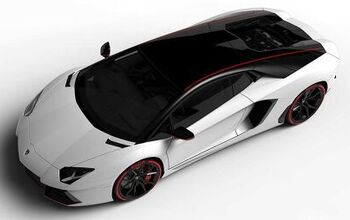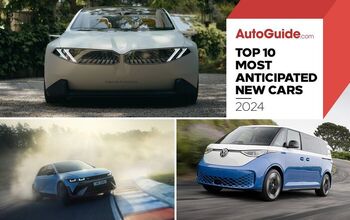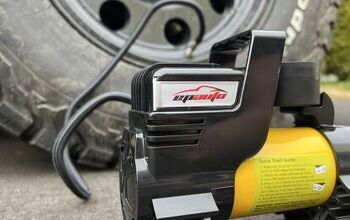2014 Lamborghini Aventador LP 700-4 Review

My teeth were in braces when I first sat in a Lamborghini. My dad took me to a showroom knowing I would get a chance to see and maybe even touch some of the cars that he knew I idolized.
FAST FACTS
| Engine: 6.5L V12 makes 700 hp, 509 lb-ft. |
| Transmission: Lamborghini ISR seven-speed automated manual. |
| Fuel economy: 11 MPG city, 18 MPG highway, 13 average. |
| Price: Starting at $404,695 or $462,000 as tested. |
After more than an hour of ogling, the sales rep walked up to us and I fully expected her to thank us for our enthusiasm, but kindly ask us to leave. Instead, she unlocked a teal green Murcielago and I got to pretend I could see over the wheel.
And that is why it is my distinct pleasure to give you a tour of that car’s successor: the Lamborghini Aventador.
Like all Lamborghini products, the Aventador is reserved for people with particularly deep pockets. Pricing kicks off at right around $404,000 including the gas guzzler tax and delivery, but that number climbs further into the stratosphere as soon as you start digging into the options list.
Inside the engine compartment, there’s a 6.5-liter V12 engine that screams to over 8,000 rpm making 700 hp and 509 lb-ft of torque. There’s only one transmission option: Lamborghini’s ISR automated manual sending power to a permanent all-wheel drive system.
Not that you care, but the EPA says you should expect 11 mpg in the city, 18 on the highway or 13 on average.
Under the Skin
But back to the important stuff: equipment. As you might already know, the Aventador is based on a carbon fiber monocoque chassis that houses all of the components that make it so special.
The basic equipment list includes 19-inch wheels on the front and 20’s on the rear, while you can upgrade to 20’s on the front and 21s on the rear wrapped in Pirelli P Zero tires, which by the way, measure 355 mm wide on the rear. Behind those wheels you’ll find a pushrod suspension inspired by formula one racing and adapted for use on regular roads.
Lamborghini is limiting production of the Aventador to 4,000 units and with a dizzying list of customizable parts; it’s safe to say that no two cars will be exactly alike. Despite that, the most striking design elements are pretty much constant.
It is unbelievably imposing in person. For perspective, it’s roughly twice as wide as it is tall. Of course carbon ceramic brakes are standard and to put things in more relatable terms, the front rotors are as big as a large size pizza from Domino’s.
You can pay for clear louvers over the engine to let the car act as a showcase for its brutal V12 heart, but my favorite part of this car has to be the unbelievably aggressive rear end.
Italian Lowrider Complete With Hydraulics
Then there’s the experience of actually getting into the car. With four inches of ground clearance, you’re basically sitting on pavement. Thankfully, there’s the ability to lift the front end of the car an extra inch and a half to take the stress out pulling into a parking lot.
You might think the scissor doors are a bit much, but it isn’t until you live with one of these for a few days that it becomes clear: you need them because otherwise it would be impossible to get in and out with how long they are.
Inside, there’s hardly a surface that you can’t customize. The interior is wrapped in high-grade leather, but for about $13,000 they’ll change most of that to carbon fiber.
As an example of what’s specific to this car: the stitched logos in the headrests, the Alcantara headliner and diamond pattern leather on the doors are all extras.
Even with how customizable the cabin is, there are a couple of areas that are leaving me scratching my head. The door handles are plastic and the mirror doesn’t automatically dim itself and for how much you’re spending on this car, should that even be possible?
But it’s hard to care as soon as you flip this red switch cover up and fire up the V12 sitting right behind you.
Sinister, Powerful and Seriously Cool
That engine was a clean sheet design for Lamborghini and is considerably more advanced than the Murcielago’s V12. In fact, in 2013 models and newer the engine will shut down an entire cylinder bank at a time during cruising speeds to function as an inline six, alternating sides every two minutes.
There are three driving modes to choose from: Strada (Italian for street), sport, and Corsa (which means race).
The car’s behavior changes dramatically in each of those modes. Cylinder shutdown is only available in Strada, where the bypass valves open much later to pacify the engine during normal driving. In that mode, the shifts are less aggressive and traction control will take over if you start to slip.
Sport mode feels like it wakes the car up completely. The bypass valves open much sooner, the engine is louder and the gas pedal is much more responsive. Like in Strada, traction control will still turn itself back on to save your bacon.
Finally, there’s Corsa; the setting meant specifically for track use. Acceleration feels razor sharp and the ISR transmission is shifting as quickly as possible.
Shifts That Feel Like A Whip Cracking
That brings me to my next point. Some people criticize the ISR transmission – essentially a robotically controlled manual – for having harsh shifts at low speeds and that’s true. It does.
But that’s only true if you let the car take over completely. If you switch into manual mode and lift your right foot at each shift like you would a normal manual transmission, the lurching feeling basically disappears.
It’s true this thing is damn expensive and you might expect it to be smooth, but keep in mind that this is an Italian supercar with 700 hp. It hits 60 mph in under 2.9 seconds.
If you can afford to spend half a mill on a car and smooth is at the top of your list, the Volkswagen Group would be HAPPY to sell you a Bentley.
Personally, I’m glad that the Aventador maintains an element of visceral mechanics that reminds you this is more than something as calculated and self-controlled as some of the other supercars on the market.
Instead, you get 6.5 liters of high-revving, naturally aspirated power that I would equate to a Stradivarius. The engine doesn’t just get louder as you progress through the rev range, it actually sounds like an instrument progressing through chords.
The Verdict:
After only two years on the market, this is far from the most powerful supercar money can buy. But keep in mind: it’s roughly half the price of a Porsche 918 Spider.
With word spreading that Ferrari is moving to turbochargers for its V8s and hybrids for its 12s, all I can say is that I hope Lamborghini’s future includes cars as visceral as the Aventador.
LOVE IT
- Sky-high redline
- In-your-face style
- Raw power
LEAVE IT
- Any plastic in the cabin

Luke is an energetic automotive journalist who spends his time covering industry news and crawling the internet for the latest breaking story. When he isn't in the office, Luke can be found obsessively browsing used car listings, drinking scotch at his favorite bar and dreaming of what to drive next, though the list grows a lot faster than his bank account. He's always on <A title="@lukevandezande on Twitter" href="http://twitter.com/lukevandezande">Twitter</A> looking for a good car conversation. Find Luke on <A title="@lukevandezande on Twitter" href="http://twitter.com/lukevandezande">Twitter</A> and <A title="Luke on Google+" href="http://plus.google.com/112531385961538774338?rel=author">Google+</A>.
More by Luke Vandezande































Comments
Join the conversation